The archaeologist Spyros Marinatos once remarked about Kyparissia that: “Your city was magnificent in antiquity, but it was unfortunate not to have scribes to write about its glory.” This phrase had a profound impact on Tzima Imirziadi when she heard it repeated years later. It inspired her not only to write about her city but also to showcase her hometown in every possible way. Raised in Kyparissia until she was 18, Tzima has fond childhood memories of the enchanting Old Town, a place that rivals other fortified towns of the Peloponnese in beauty and size, although this is not widely recognized.
Tzima and her husband, Nikos Imirziadis, have made it their life’s mission to preserve Kyparissia, its architecture, and its history. Well-traveled, intelligent, and with a profound love for culture and nature, these pioneers in the field of marketing in Greece – founders of Greece’s first sales promotion company, SPC, in operation since 1978 – have for the past twenty years focused their know-how and their passion on Kyparissia. Their most notable achievement to date is the restoration, completed in 2013, of the town’s famous watermill. Today, it’s a beloved gathering place for people from all over the world.

© Stelios Spiropoulos
“We always wanted to have as much free-flowing water as possible around our home,” says Tzima. “In fact, we’ve laid out small streams in our garden, we love it so much. When we saw the watermill, we were thrilled and bought it without much thought and without any real idea what we would do with it. We don’t know exactly when it was built; the earliest written reference to it is from 1850.”
In the gorge, there were nine other mills. This one stood at the lowest spot on the stream and was the last to cease operating, in 1974, when the municipality cut off the water supply, compensating the miller with 80,000 drachmas. He maintained the small shop and the café of the mill until the late 1980s; the café had served those who came to the area to grind grain or who were en route to the mountain villages further inland.

© Stelios Spiropoulos
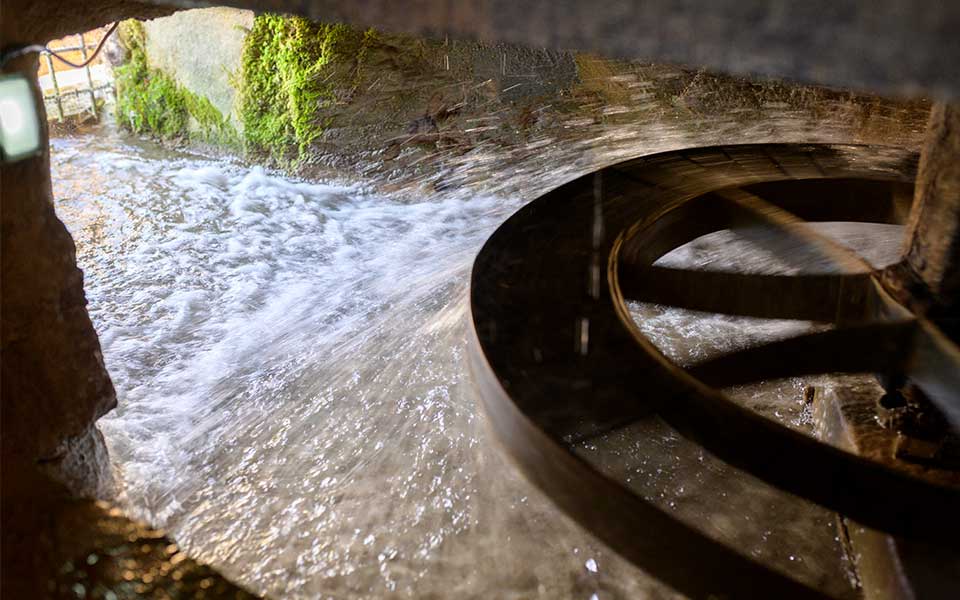
© Stelios Spiropoulos
Tzima and Nikos Imirziadis bought the mill in 2005: “The heirs to the mill simply gave us the key; they didn’t want to keep anything that was inside it,” Tzima recounts. “We’re passionate about antiques and have visited all the antique shops in Europe, so we were ecstatic with what we found inside.” They kept all the items, restoring those that needed work. Today, you can see them in the mill – everything from pillows and furniture to umbrellas, cups and jugs.
You can also see the watermill’s inner workings, now restored to full functionality. Although the couple are not engineers, they explain that: “We did do research into how much hydraulic force was needed to move the millstones, considering the possibility of making the mill operational again.” As a next step, they located Giorgos Papandreou, head of the Service of Modern Monuments and Technical Works of Western Greece, Peloponnese, and the Southern Ionian. An architect and engineer with comprehensive knowledge of mills, Papandreou guided them as they built a special 80-cubic-mater water tank to substitute for the stream that no longer passed through there. They repaired the mill components, and water soon found its way back into the water tower, the trough, and ultimately, to the millstones themselves. The architect Areti Ropalidou played a crucial role in the project as well, even bringing charming light fixtures from Florence. In 2013, the Kyparissia watermill opened its doors to the public, ready to grind once again.
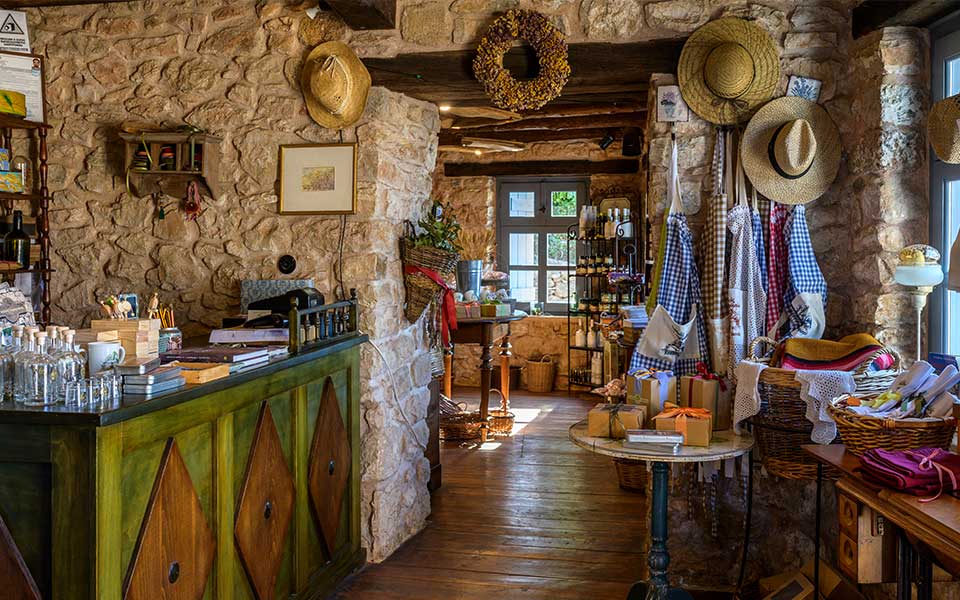
© Stelios Spiropoulos
Watching the cyclical flow of the water today – the system recycles the same water, saving natural resources – gives Tzima and Nikos immense satisfaction and pleasure; they are, as they say, “dedicated to nature,” and do volunteer work for wildlife organizations as well.
Nasos Smerdis took on the roles of miller and host, and can still be found grinding wheat and welcoming visitors. With the flour he produces, Nasos and his wife Anna make cookies, pasta (including hilopites and lasagna sheets), and trahana, all available for sale on-site. They also produce items for their now-famous breakfast, including fresh bread, fried bread, and other local homemade products such as grape molasses, their own honey, and eggs from their chickens. On a two-acre estate with streams, orange trees, and lemon trees, tables are set out to welcome guests with homemade lemonade, preserves and even meze for tsipouro, a strong local spirit.
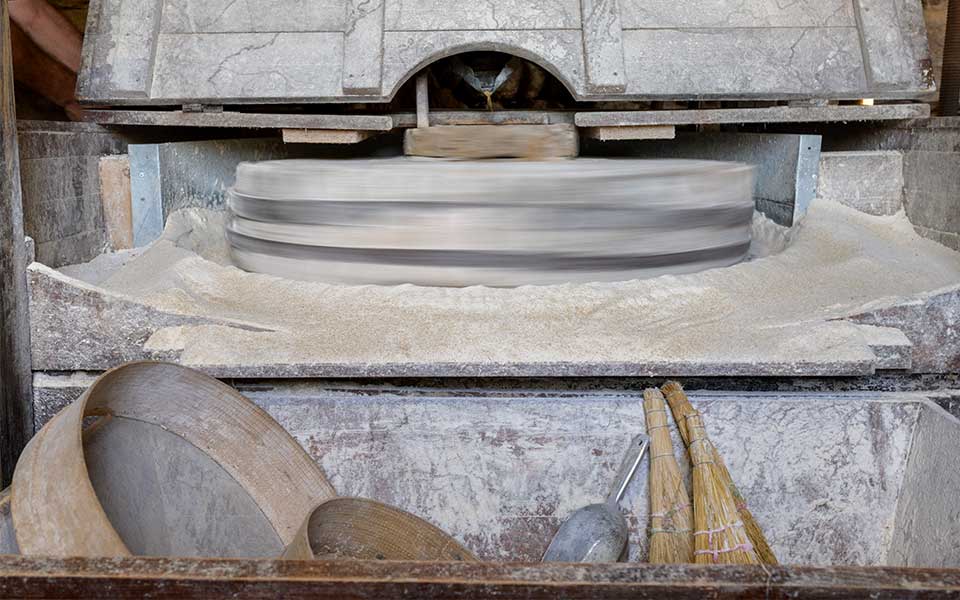
© Stelios Spiropoulos
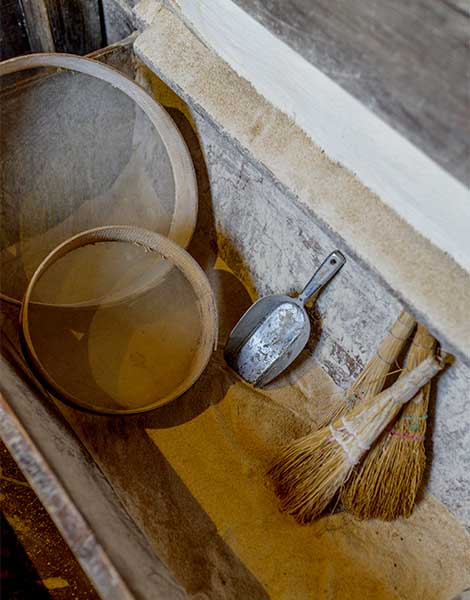
© Stelios Spiropoulos
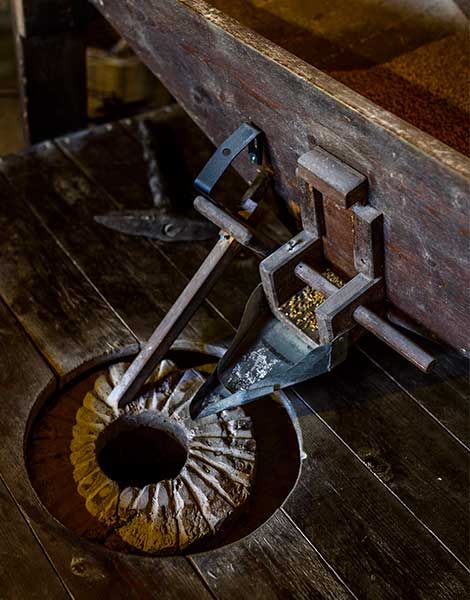
© Stelios Spiropoulos
“Nasos and Anna manage the mill with great enthusiasm and love; if it weren’t for them, I don’t know what the mill’s fate would have been,” says Tzima. She adds that it’s not about profit, only about keeping the watermill alive. With that in mind, they organize cultural events on the premises, hosting everything from book presentations to music nights (with notable artists such as Nikos Xydakis, Ganas, and Mariza Koch) and wine-tasting evenings featuring local wines with all the producers from Trifylia.
Tzima and Nikos, full of energy and ideas, didn’t stop at the restoration of the mill. They also bought and restored a grand mansion from 1820. What’s more, they established the non-profit organization “Program for the Protection and Promotion of the Old Town of Kyparissia,” through which they advocate for the restoration of the Castle and the Old Town and promote the historical significance of the area. As part of this program, they’ve published two history books and a photo album about Kyparissia; funded the study for the stabilization of the Castle’s slopes to enable restoration work by the Ministry of Culture; and invited renowned painters to fill the Old Town with easels and create artworks that were later exhibited at the cultural center Athinais in Athens.
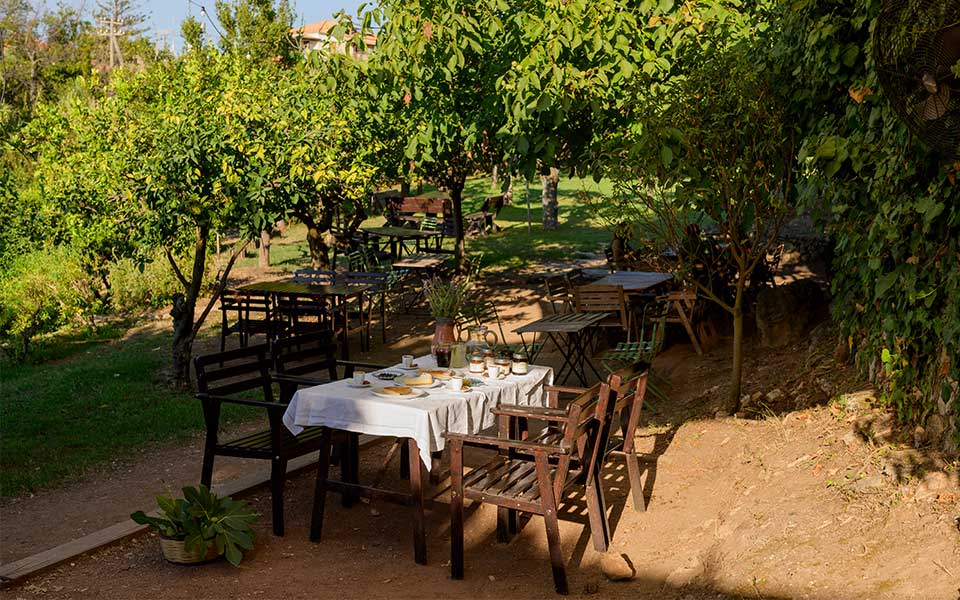
© Stelios Spiropoulos
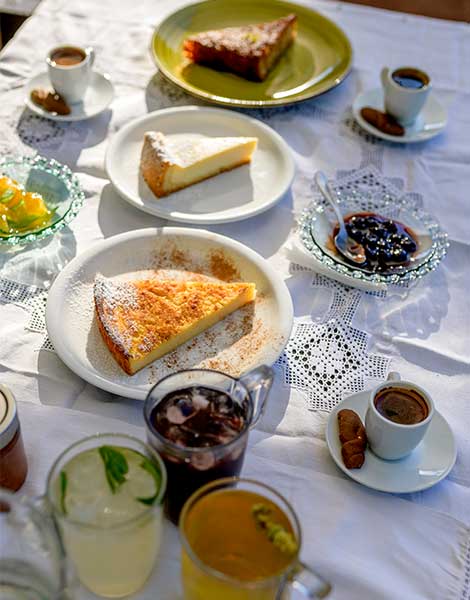
© Stelios Spiropoulos

© Stelios Spiropoulos
Equally interesting was their invitation to the National Technical University of Athens, resulting in 80 students and 10 professors studying the houses of the Old Town and conversing with the traditional craftsman Dimitris Douvitsas. It is Douvitsas who comes every time Tzima Imirziadi calls him, even if it’s just to fix a single stone that’s come loose on a cobblestone path. Together, they restored the Castle’s fountains in accordance with a study by the Ephorate of Antiquities, which always oversees their actions. Due to their persistent efforts, the stabilization of the Castle’s slopes and walls was completed last year, and the municipality was able to proceed with the redevelopment of the square and the undergrounding of the power company’s cables.
“If the locals desire it, Kyparissia can become at least a new Kardamyli in terms of aesthetics,” says Tzima, who’s proving with her efforts that all it takes to keep Greece beautiful is determination and a love of authenticity.












